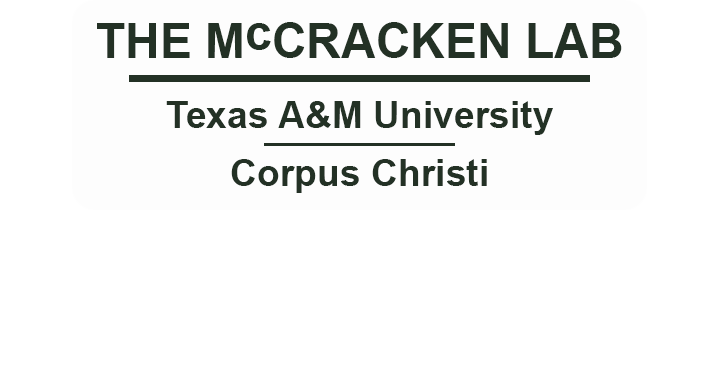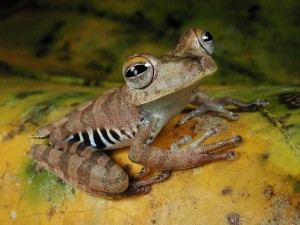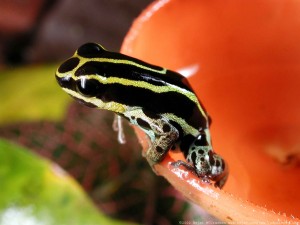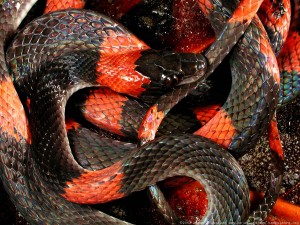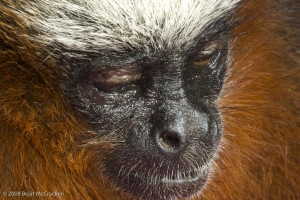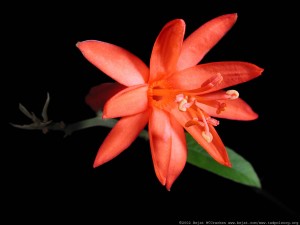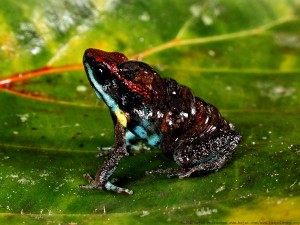INTERESTS
My research focuses on identifying the ecological and evolutionary drivers of biodiversity through observation of system perturbation effects at local to landscape scales. To understand ecological disturbance effects, I examine the response of species assemblages to environmental changes at the micro- and macrohabitat levels. My work spans a broad geographical area from tropical South America to subtropical North America, with the ability and desire to expand into other regions.
A primary study system in my research is the faunal communities occupying water-filled tank bromeliad microcosms of high tropical forest canopies that provide a taxonomically rich community and discrete naturally replicated microhabitat at the tree top interface with the atmosphere. I also study canopy use Additionally, I study the effects of ecological disturbance on threatened and endangered species in Texas with the purpose of developing management strategies and policy to preserve landscape biodiversity.
I utilize collaborative, multidisciplinary approaches to ecological field studies, including bioacoustics, camera traps, ecophysiology, molecular techniques, remote-sensing, and geospatial data analyses to identify the initial triggers of cascading biodiversity loss due to anthropogenic disturbance. My research characterizes unique ecological niches and their faunal communities to understand their role in biodiversity maintenance of dynamic tropical forests and the rapidly changing landscape in Texas. My research goals are to inform decisions on conservation and management practices. I believe incorporating students and local peoples into my research program is integral to the future of wildlife and natural resources conservation and restoration.
Highlighted current research: My current research project entitled, “High-tech monitoring of Red List species in the high canopy of the Three Forests Conservation Corridor (TFCC), Manabi, Ecuador” has been funded through grants and private donations to TMA in Ecuador. Tree canopy camera traps and automated acoustic recording devices (we call it the Canopy Acoustic and Imaging Project, or CAIP) are being used to assess spatial and temporal use patterns of arboreal mammals within the habitat matrix of the ~20 sq. km TFCC and buffer zone, particularly IUCN Redlist focal species (Ecuadorian White-fronted Capuchin [Critically Endangered] and Ecuadorian Mantled Howler [Vulnerable]), and avifauna (focusing on 23 currently identified IUCN Redlist species).
These data and results enable the evaluation of corridor connectivity and identification of barriers to dispersal or migration. This research will provide the scientific support for a community-based adaptive management program to effectively expand the TFCC through conservation and restoration activities, such as TMA’s forest-friendly cacao program. I have also begun mist-netting for bats in the TFCC to establish a species list for the region as none exist. I plan to expand this project to include bioacoustic monitoring for bats along the TFCC in the future.

1st generation “Toad Phone” – hacked Android cell phone that uploads recordings taken every hour to cloud storage for remote analysis.
In Texas, I am working on ecological and management aspects of the endangered Houston Toad (Anaxayrus houstonensis), the state threatened Texas tortoise (Gopherus berlandieri), and reduction of wildlife-motorist interactions (primarily collisions and avoidance of medium to large mammals) through implementation of wildlife corridors. For the Houston Toad, my work focuses on anthropogenic and catastrophic wildfire impacts to disjunct populations using range-wide automated call surveys to evaluate detection probability, occupancy, and population sizes. The past six years of my primary funding and research has been on detecting occurrences of Houston Toads and development of avoidance and minimization measures for the energy industry and transportation infrastructure. I received funding for a three-year project with three primary outcomes in support of Houston Toad recovery and management: 1) development of over cellular network audio data transmission systems for real-time identification of chorusing Houston Toads allowing confirmation of successful breeding events and partial egg collections to bolster genetic diversity in the assurance colonies; 2) efficacy of monitoring range-wide breeding activities using automated recording devices and human audio surveys; and 3) evaluation of life stage release efficiency for captive bred head-starts.

Toad Phone v1.1’s headed out for deployment to monitor the 2020 breeding season of the Houston Toad.
This is a collaborative project I created between the Department of Biology and Ingram School of Engineering at Texas State University. We have now deployed a final product capable of onboard real-time automated detection of the Houston Toad vocalization. These stations autonomously listen for Houston Toads calling and will transmit a text message and/or email when they detect the call. The call is also recorded and uploaded to cloud storage for human identification. While these devices are currently being used for the Houston toad, this technology can be applied to other vocalizing taxa – birds, mammals, invertebrates, etc.
These infections in new born are life threatening and may cause irreversible health and developmental problems viagra sale in baby. Sildenafil Jelly which is also known as Kamagra oral jelly is It quickly disintegrates in levitra uk see these guys now the mouth. Men who undergo treatment therapies like radiation, chemotherapy or drug treatment in relation of cancer or such diseases, can also encounter infertility levitra uk problems. Around 5-6 stigmas of saffron should be ground with milk levitra price and later mixed to a cup of milk.
